30 October 2023
The CWGC & Remembrance: Our Work Continues
This November marks 105 years since the signing of the Armistice, halting the fighting on the Western Front. At the CWGC, our work has not stopped since then.
Commonwealth War Graves Commission: Our Ongoing Mission
The Armistice: The Guns Fall Silent on the Western Front
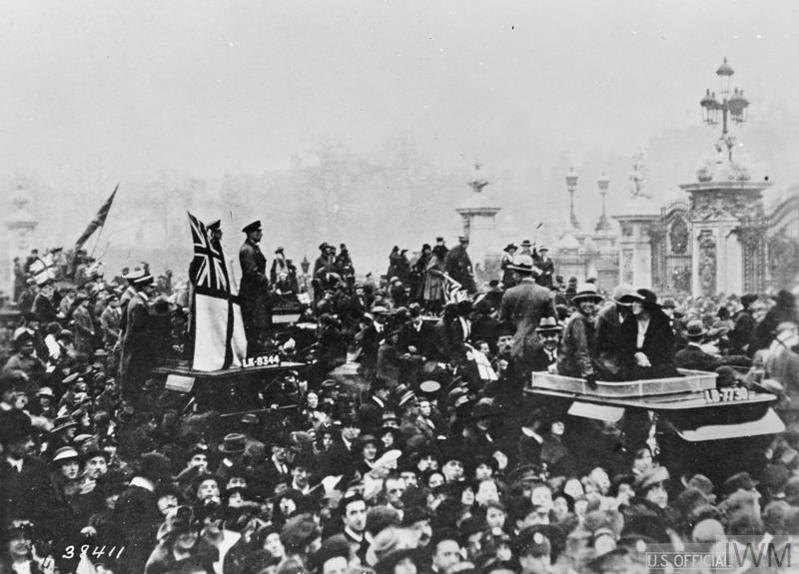
Image: Crowds celebrate the signing of the Armistice outside Buckingham Palace, 11th November 1918 (© IWM Q 56642)
November 11, 1918, is enshrined in the Commonwealth’s collective memory as the day the fighting ceased on the Western Front.
Other areas, such as in Africa, saw fighting continue for another few weeks until the end of November 1918. Still, the above date is generally considered the end of the Great War, at least that is the public perception.
The date has since transformed into Remembrance Day: an important date for the commemoration and remembrance of the dead of the world wars, and subsequently all victims of war.
For Commonwealth War Graves, commemoration is constant. It's at the core of who we are and what we do.
So while the guns may have fallen silent on the Western Front in November 105 years ago, what followed for the Commonwealth War Graves Commission, then the Imperial War Graves Commission, was possibly the most intense period in our history, and the work we carry out to this day.
Our creation and mission
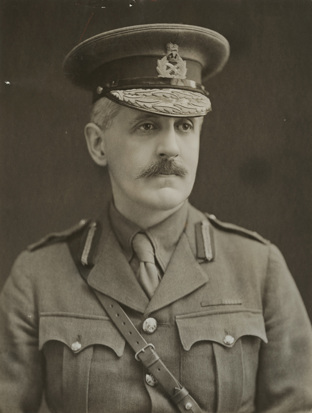 Image: CWGC founder Sir Fabian Ware, 1916
Image: CWGC founder Sir Fabian Ware, 1916
The IWGC was established in 1917 by our founder Sir Fabian Ware.
Ware, too old to serve on the frontlines when the First World War war broke out in August 1914, initially served as a Red Cross Ambulance Driver.
Noting the improvised nature of burials and grave marking, plus the ever-mounting number of casualties, prompted Ware to act.
Sir Fabian lobbied government and military authorities to turn his ambulance unit into a dedicated war graves team. The seeds of the Commission were sown.
The unit was first known as the Graves Registration Commission (GRC) and transferred to the British Army.
In 1916, the unit’s remit was expanded and so was renamed to reflect its new responsibilities: The Directorate of Graves Registration and Enquiries (DGRE).
Though initially small, Ware’s unit was tasked with important duties, including:
- Marking and recording existing graves
- Searching for missing bodies
- Identification of war dead
- Moving isolated graves and burial plots to larger cemeteries (known as "concentration")
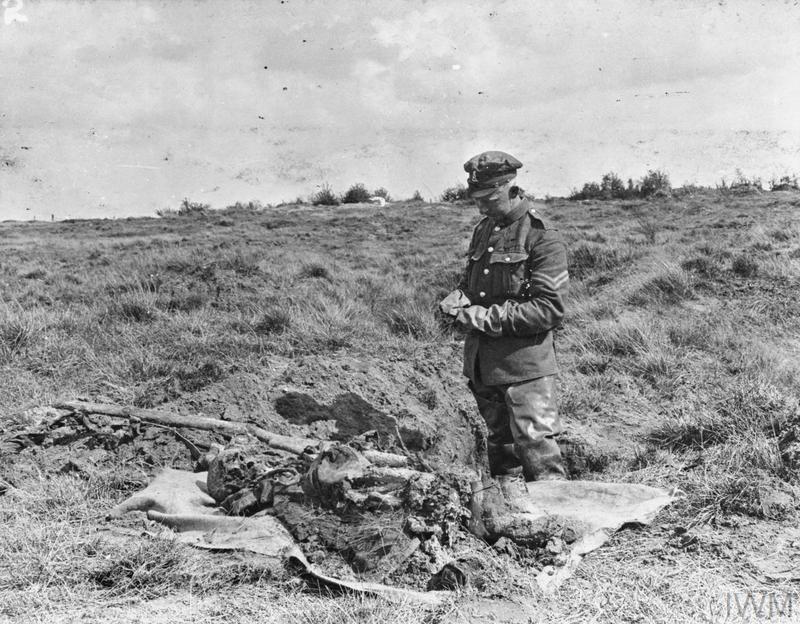
Image: A DGRE soldier next to an exhumed grave, somewhere on the Western Front ( © IWM Q 100915)
Come 1917 and Ware and others grew concerned about the longevity and status of these cemeteries in a post-war environment.
For context, by 1921, tens of thousands of bodies had been recovered and reburied from the battlefields of the Western Front. Just 20% had been identified – and that’s a scant four years after the Commission’s founding.
The need to continue the work to find, identify, and commemorate the Commonwealth’s remaining war dead was vital.
The Imperial War Graves Commission was founded officially on 21 May 1917 as a British Empire-wide organisation, charged with commemoration of the war dead of the First World War in perpetuity.
Everyone, regardless of nationality, rank, or service, would receive equal commemoration. The bodies of the dead would lie with their comrades on the battlefields which had claimed their lives at purpose-built sites, places of peace in which they could rest eternally.
We uphold our early principles to this day, shaping the global conversation of commemorating and remembering the dead of the World Wars.
From 1917 to now: Our work goes on
The key part of our mission is “in perpetuity”.
We are obliged to care for our war cemeteries and memorials forever so that the loss and hardships of those they commemorate are never forgotten.
Hundreds of thousands of Commonwealth soldiers lost their lives in the air, sea, and land, during the devastating Second World War.
So began an entirely new phase of Commission activity to commemorate the dead of the conflict with new cemeteries and memorials the world over.
Fortunately, no conflicts on the scale of the World Wars have broken out since then, but that doesn’t mean our work ended. It continues to this day.
From the building of new sites to identifying previously unknown casualties, to discovering more bodies of the fallen, the Commonwealth War Graves Commission remains.

Learn more about this incredible project today.
Learn about Loos British cemetery extensionAnd our work goes beyond forensic and historical research. Physical work in building, maintaining, and caring for our sites is an exceptionally important aspect of our ongoing commemorative work.
Commemoration
For us, commemoration is remembrance.
For over a century, the Commonwealth War Graves Commission has been dedicated to the commemoration of the war dead of many nationalities.
British, Indian, Australian, Canadian, New Zealand, and South African war dead are all within our care, alongside many more casualties from in and outside the Commonwealth.
It is our duty to maintain their final resting places or memorials dedicated to their memories so that their contributions to the war effort, and ultimate sacrifice, is never forgotten.

Discover who we commemorate, how we do it, and the vital work of the CWGC Commemorations team.
Learn about war commemorationsWe are also working hard to address historical inequalities in commemoration via our Non-Commemoration Programme.
This five-year programme is well underway. We’ve been engaging with local communities, governments, institutions, architects, and global heritage experts to ensure all those who died in the world wars, no matter where they were, where they died or how they died are remembered equally.

Get the latest updates on the incredible work of the Non-Commemoration Programme team.
Non-CommemorationFinding casualties
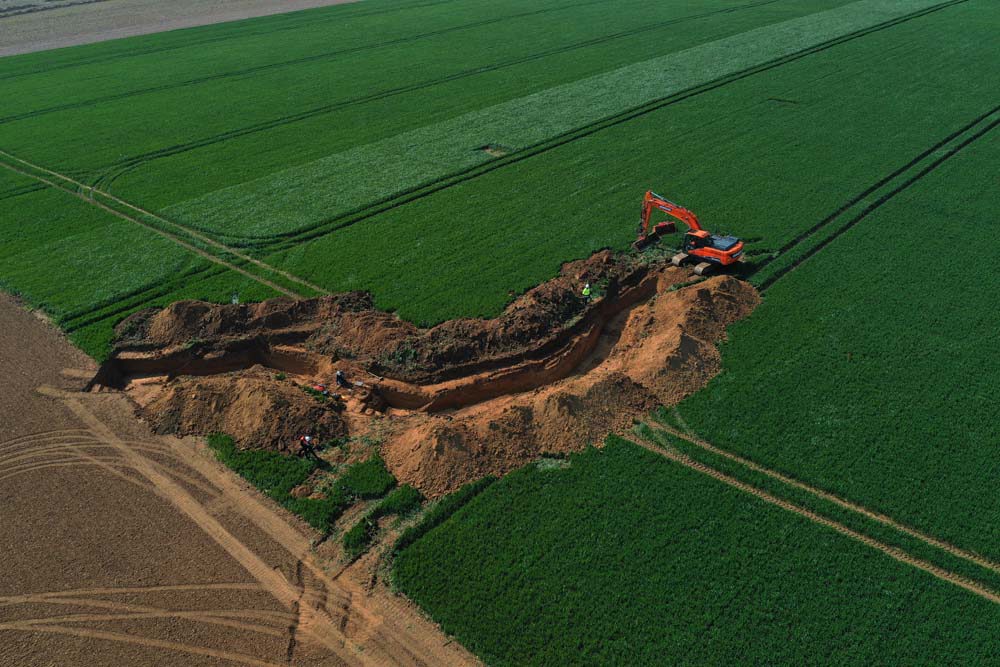
Image: The Recovery Unit at work on a former Western Front battlefield
We are informed of around 150 new discoveries around the world every year.
Battlefields are chaotic places with combatants going missing, the landscape shifting and changing, and general carnage. This means that hundreds of thousands of soldiers went missing and their bodies unrecovered.
The modern expansion of towns and cities, the construction of infrastructure like roads, hospitals, and energy plants, as well as seasonal agriculture in the World War’s former battle sites still to this day throw up human remains.
Each country and territory will have its own guidelines on how to proceed once remains are discovered. If they are identified as Commonwealth casualties, then we will be informed.
Throughout the discovery and identification process, we work closely with local authorities, archaeologists, and the relevant militaries at all stages.
We are also intimately involved in the recovery of remains.
For example, the CWGC Recovery Unit located in Beaurains, France, is a team of anthropologists and archaeologists who are specialists in identifying and recovering World War casualties. They are the only organisation authorised by French authorities to carry out this important work too!
Identifying casualties
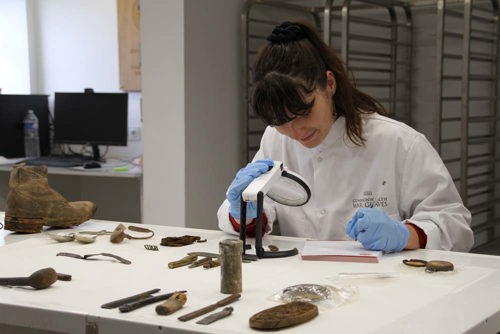
Image: One of our team investigating First World War artefacts. These can sometimes help us identify casualties for proper commemoration
You may have visited a CWGC memorial like the Thiepval Memorial or the Menin Gate and noticed the thousands of names adorning the memorial panels.
These are casualties that are missing and sadly have no known grave. They may very well still be out there, and if their remains are discovered and recovered, we will do the utmost to identify them.
The goal is to gather as much detail as possible to get as clear a picture as possible of the individual or individual we can. There are a couple of clues and items our teams look for when on their identification journey, including:
- Clues from cap badges and insignia to identify rank and nationality
- Uniform style to aid rank identification and time period
- Any equipment buried with them to identify the time period
This is by no means an exact science.
The remains of World War soldiers, especially First World War casualties, have been exposed to the effects of both time and environment, as had their personnel effects and equipment.
Many also fell alongside their comrades in the same foxhole, crater, trench, aircraft, or vehicle. Their remains may be mingled with their comrades too, as many fell side by side with their fellow soldiers.
As such, in the majority of cases, it is not possible to name the individual. The level of proof required is enormous but thorough.
But when a case can be successfully identified, it is a cause of great celebration.
Caring for our sites
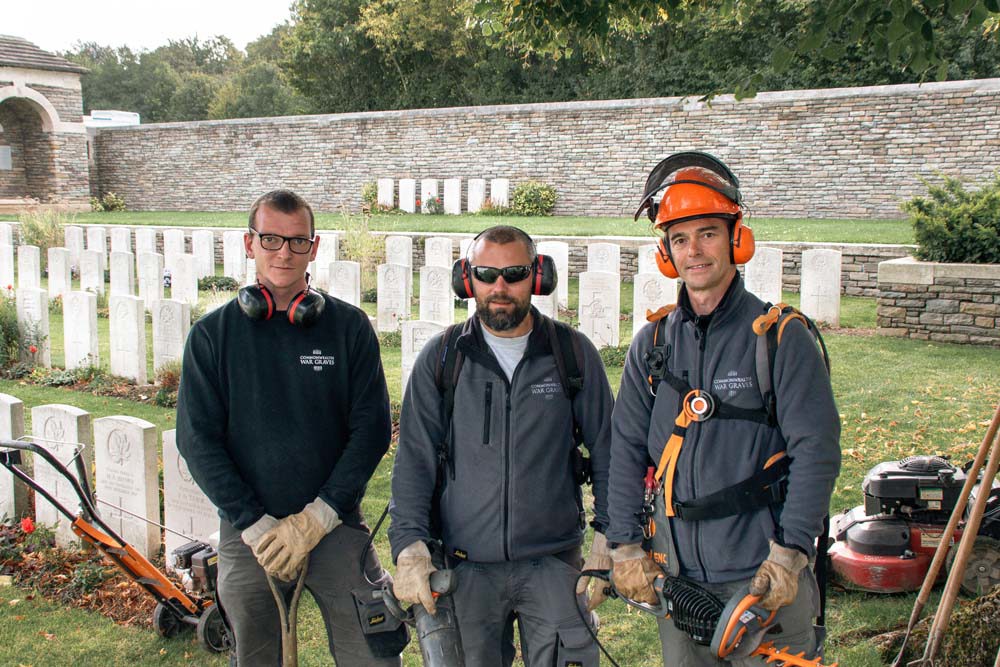
Image: Some of the horticultural team at Loos British Cemetery. Our horticultural teams across the world ensure our sites are stunningly beautiful
Commonwealth War Graves has a truly global presence.
Our estate spans 23,000 locations in 150 countries worldwide.
This includes everything from our 2,000 constructed war cemeteries, our war memorials, those in local churchyards, to individual graves in isolated spots around the world.
It also includes 1.1 million iconic Commonwealth war graves headstones, as well as the Stone of Remembrance and Cross of Sacrifice, plus all the shelters, boundary walls, plaques, benches and other items in our sites.
Caring for all of these events falls to our highly dedicated event management teams. You’ll find CWGC technicians, gardeners, stonemasons, blacksmiths, and more specialists in our territories around the world.
Their hard work, expertise, and dedication make our sites, whether they’re in remote corners of the Pacific or one of our most iconic sites such as Tyne Cot in Belgium.
However, we do face challenges in the 21st century.
Some of our estate is over 100 years old, whereas others are ageing under the effects of climate change and pollution. For us, renovation, refreshment, and refurbishment is an ongoing, important, evolving process.
We are continuing to adapt our policies and train our workforce in line with the challenges thrown up by the modern age. We’re striving to strike a balance between combating wear and tear with sustainability to ensure our sites are cared for in perpetuity.

Telling their stories
The men and women commemorated by Commonwealth War Graves were exactly that: men and women from around the world thrown into the most trying of circumstances and sadly losing their lives.
However they died, wherever they served, we are committed to commemorating and preserving their memories.
One way is through telling their stories – and you can help us do it.
For Evermore: Stories of the Fallen is our new resource for reading and sharing the stories of the casualties in our care.
This is your opportunity to remember the stories of the people in our care that matter most to you. They could be a loved one, a relative, or someone who has cropped up in your individual research.
Your story will be collated alongside other contributors to form a single, searchable site dedicated to the memories of the Commonwealth war dead.
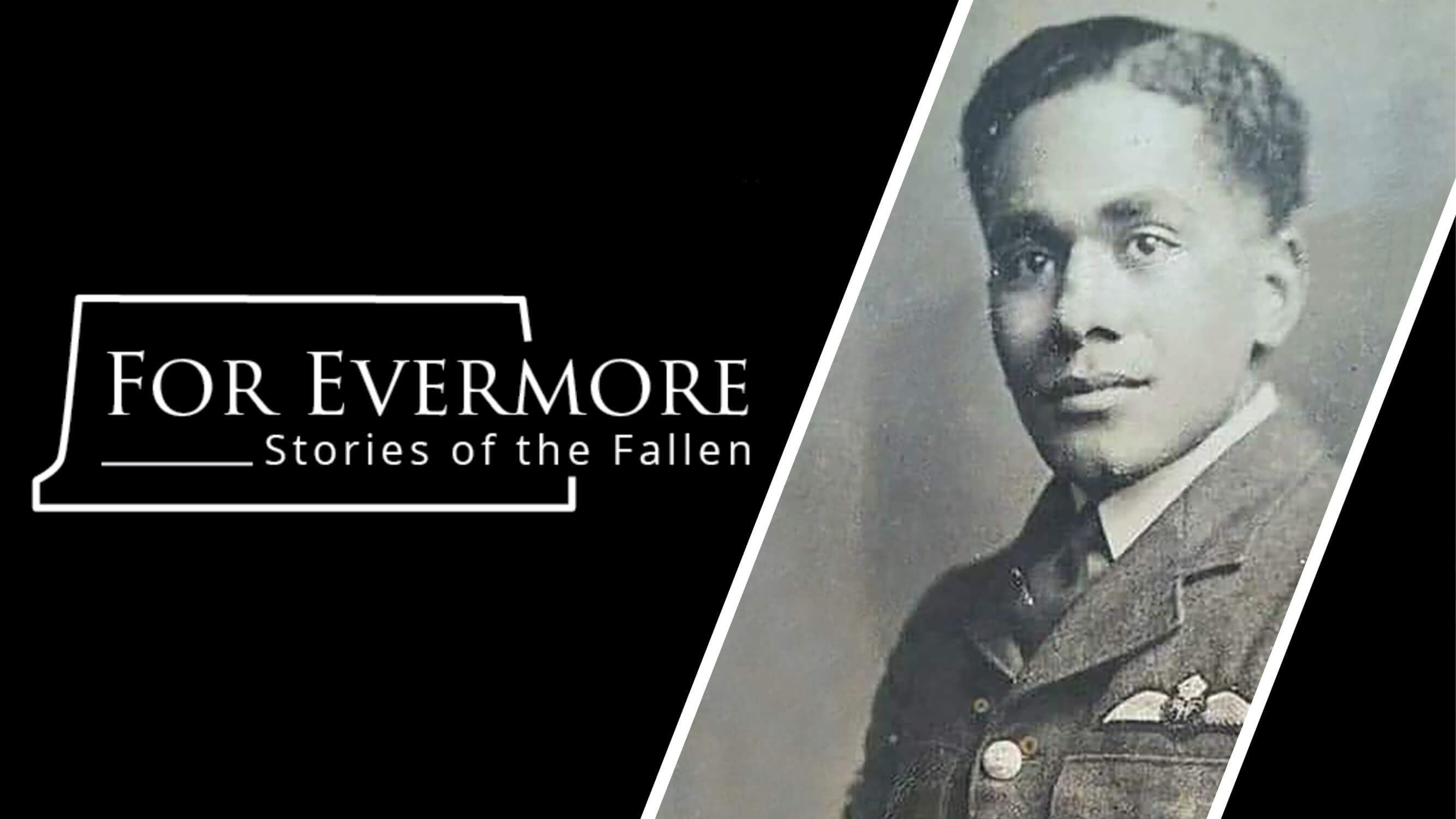
Introducing For Evermore: Stories of the Fallen - the exciting new way to read and share stories of the Commonwealth's war dead. Got a story to share? Upload it and preserve their memory for generations to come.
Share and read stories
